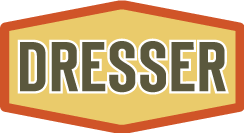 Tuesday, October 16, 2007
Tuesday, October 16, 2007  Post a Comment
Post a Comment continental drift
Geography plays a prominent role in Correction Road, and it's always been an important theme for me in any of my writing. As a young teenager, I had no real interest in serious literature and focused, instead, on reading fantasy novels, beginning with Tolkien and moving through to contemporary writers in the genre such as Kay. Much of my fascination with the genre sprung from the prominence that maps played in the stories and in the books themselves. Thus my good friend Correy (now working for Vehicule Press of Montreal), and I spent countless hours drawing our own maps for imagined continents and lands. And we'd come up with kingdoms and characters and plots as well, but in the end it was all superfluous to the maps.
I think the same love has influenced even the video games that I would end up playing toward the end of adolescence and into adulthood: I'm fascinated by the computer scripts used by series such as Sim City or Civilization to generate game maps. I've even explored and worked with terrain mapping scripts in Flash and Processing environments.
My wife has a love, as I do, of vintage papers, and a few years ago we discovered the seemingly endless variations of maps produced by the canadian geographic survey. The maps plot everything from chemicals in the soil to waterfowl habitation potential. The production and printing is usually of very high quality and printed on lovely thick paper. They're somewhat reminiscent of the county maps that my father has pinned up on the wall of his office, showing sections of land with each landowner labelled there.
All of this is tied together in Correction Road, from the county map that Hugh keeps in his truck, to the narrator's obsession with supercontinents, to the discussions of the way that we shape borders and that borders shape us. They are themes and motifs that I revel in, and about which I think I have a lot to say as they've been with me for as long as I can remember.

Reader Comments